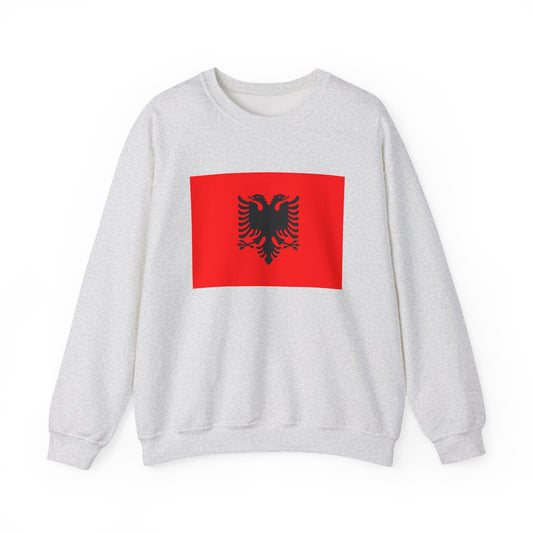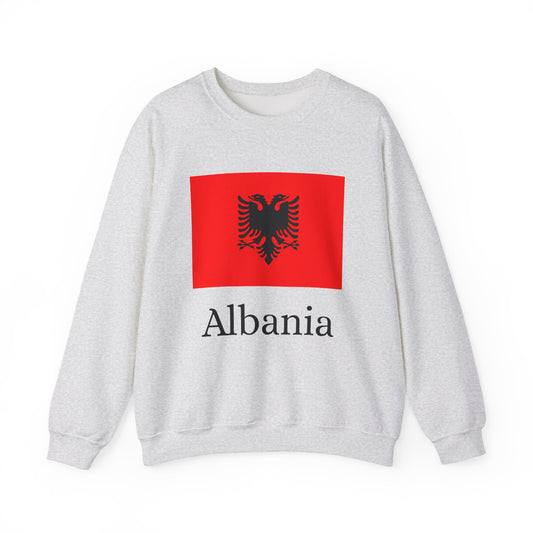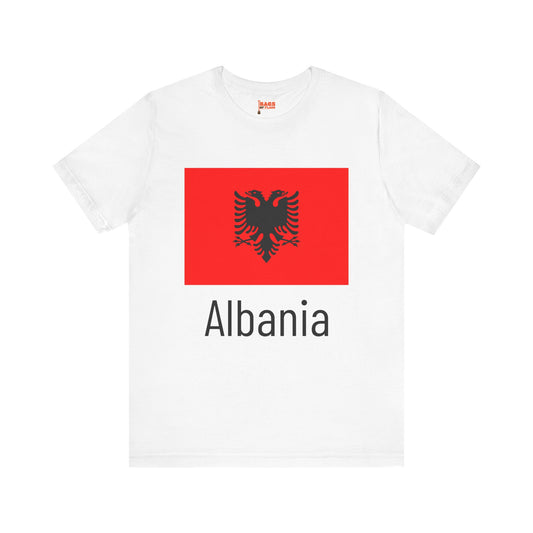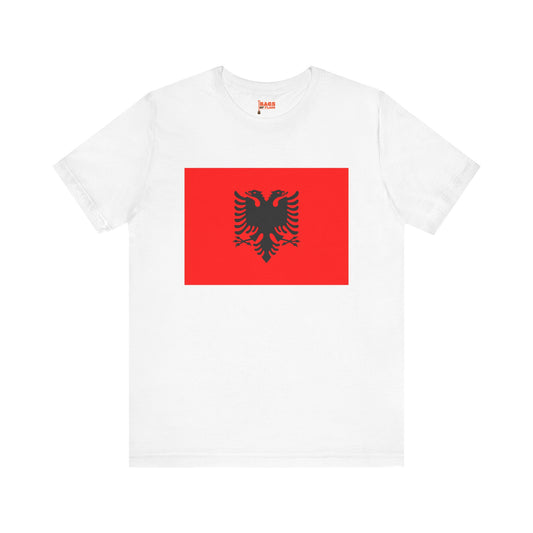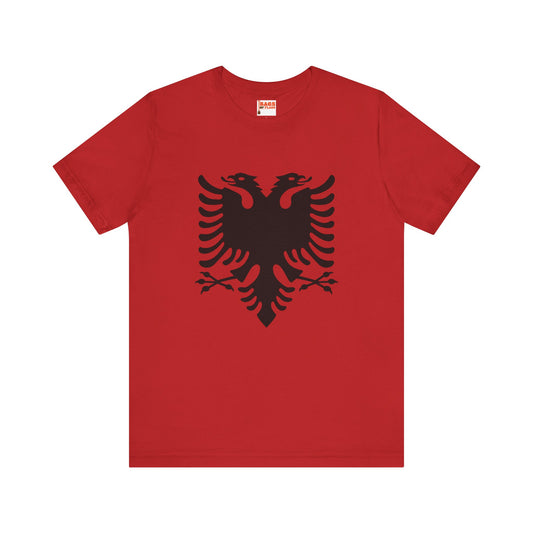-
Albania Pillow
Regular price $22.65 USDRegular priceUnit price / per -
Albania Backpack
Regular price $59.79 USDRegular priceUnit price / per -
Albania Leather Patch Hat
Regular price $18.85 USDRegular priceUnit price / per -
Albania Mug
Regular price $11.65 USDRegular priceUnit price / per -
Albania Trucker Cap
Regular price $14.90 USDRegular priceUnit price / per -
Current Flag of Albania Inspired Sweatshirt
Regular price $34.15 USDRegular priceUnit price / per -
Albanian Provisional Government (1912-1914) Sweatshirt
Regular price $34.15 USDRegular priceUnit price / per -
Albania Flag Sweatshirt
Regular price $34.15 USDRegular priceUnit price / per -
Albania Sweatshirt
Regular price $34.15 USDRegular priceUnit price / per -
Albania Hoodie
Regular price $34.40 USDRegular priceUnit price / per -
Albania T-shirts
Regular price $22.79 USDRegular priceUnit price / per -
Albania Flag on Hoodie
Regular price $34.40 USDRegular priceUnit price / per -
Albania Flag on T-shirt
Regular price $22.79 USDRegular priceUnit price / per -
Albanian Flag T-Shirt: Inspired by the Current Flag of Albania (1992-Current)
Regular price $22.79 USDRegular priceUnit price / per -
Current Flag of Albania Inspired Hoodies
Regular price $34.40 USDRegular priceUnit price / per -
Albanian Provisional Government (1912-1914) Hoodies
Regular price $34.40 USDRegular priceUnit price / per -
Albanian Provisional Government (1912-1914) Inspired T-shirt
Regular price $22.79 USDRegular priceUnit price / per
Collection: Albania
The Albanian flag is a symbol of national pride and identity, representing the rich history and culture of Albania. We will look into the significance and etiquette surrounding the Albanian flag, exploring its design, historical context, symbolism, current relevance, and additional facts.
Overview of the Albanian Flag's Design and Colors

The Albanian flag features a bold red field, symbolizing the valor and bravery of the Albanian people, overlaid with a distinctive black double-headed eagle. This eagle, positioned in the center with its wings and talons extended, serves as a powerful emblem of freedom and the country’s indomitable spirit.
The choice of red as the flag's primary color is deeply entrenched in the nation's history, echoing the sacrifices and courage of its citizens through centuries of struggle for autonomy and sovereignty. The black color of the eagle, meanwhile, encapsulates the enduring resilience and the challenges overcome by Albania and its people. Together, these elements create a flag that is not only visually striking but laden with meaning, representing the essence of Albanian identity and the unyielding quest for independence.
Historical Context of the Albanian Flag
The origins of the Albanian flag, featuring its distinctive black double-headed eagle set against a red background, trace back centuries, though it was officially adopted in its current form on April 7, 1992, marking a significant transition from communism to a new era of democratic governance. The design itself, deeply rooted in Albania's national awakening, pays homage to a period when Albania strove for independence and sovereignty amidst the Balkan Wars and the crumbling Ottoman Empire.
The flag’s inception dates to the declaration of Albanian independence in 1912, when Ismail Qemali raised it in Vlorë, signifying the birth of Albania as a nation-state. Throughout the turbulent 20th century, variations of the flag were used, each reflecting the political shifts within the country, from the Italian occupation during World War II to the establishment of the People's Socialist Republic of Albania. The 1992 re-adoption symbolized not just a return to the historic emblem but also a reclamation of Albania's heritage and identity following the collapse of communist rule. This pivotal moment underscored the flag's enduring significance as a symbol of national unity and freedom, bridging Albania's rich historical legacy with its aspirations for a democratic future.
Symbolism Behind the Albanian Flag

The Albanian flag is steeped in symbolism, each element telling a story of the nation's past, its struggles, and its unbreakable spirit. At the heart of the flag’s design is the black double-headed eagle, an ancient emblem that harks back to the Byzantine era, symbolizing the country's sovereignty and the connection between its medieval heritage and modern identity. This majestic bird, with wings spread wide, encapsulates the Albanian people's desire for freedom and their readiness to defend their land against any threat.
The color red of the flag's background is not chosen at random; it stands as a poignant reminder of the bravery and sacrifice of countless Albanians who fought for their country's independence and freedom. It embodies the bloodshed in the pursuit of liberty, a testament to the nation's resilience and tenacity in the face of adversity. Together, the red and black not only create a visually striking flag but also weave a narrative of unity, strength, and indomitable will.
Furthermore, the dual-headed eagle represents the unification of Albania's regions, symbolizing national unity. The historical figure Gjergj Kastrioti Skanderbeg, who famously used the double-headed eagle as his banner, is often associated with the flag, reinforcing its significance as a symbol of resistance against oppression and a beacon of hope for Albanians everywhere. Through these symbols, the Albanian flag narrates a tale of a people's undying spirit, their struggles for sovereignty, and their dreams of a prosperous, united future.
Current Relevance of the Albanian Flag
In contemporary Albania, the flag is a ubiquitous presence, waved with pride during national celebrations, solemnly honored in military parades, and prominently displayed in public squares and government buildings. Its role extends beyond mere national symbolism; it acts as a unifying emblem for Albanians worldwide, fostering a sense of belonging and cultural affinity among the diaspora.
The flag's significance is further amplified during international sports events, where it becomes a rallying point, instilling a collective pride and joy in the achievements of Albanian athletes on the global stage. Despite its storied past, the flag continues to be a vibrant part of Albania’s social and political discourse, occasionally sparking debates that reflect the evolving nature of national identity and the ongoing journey towards a cohesive, inclusive future. These discussions underscore the flag's enduring relevance as more than just a symbol of statehood, but as a living testament to Albania's resilience, diversity, and aspirations.
Additional Facts About the Albanian Flag
The protocols and traditions surrounding the Albanian flag reveal the deep respect and reverence held for this national symbol. A notable practice is that the flag must always be displayed in a position of honor and, unlike many other national flags, is not lowered to half-mast, even during periods of national mourning. This tradition underscores the unyielding spirit and resilience of the Albanian people, reflecting an ethos of perseverance and eternal pride.
Handling the flag is a matter of serious etiquette; it should always be done with the utmost care and respect. This involves ensuring the flag never touches the ground, is kept in pristine condition, and is displayed prominently during all official events and celebrations. Such practices highlight the flag's sacrosanct status among Albanians.
An intriguing piece of folklore related to the flag involves its emblematic double-headed eagle, which, beyond its historical and national significance, is also imbued with mythical connotations. It is believed to embody the valor and sagacity of Gjergj Kastrioti Skanderbeg, Albania's revered national hero, drawing a parallel between his legendary strength, wisdom, and the attributes the eagle represents. This blend of history, myth, and symbolism enriches the cultural tapestry surrounding the Albanian flag, making it a subject of enduring fascination and pride.
















